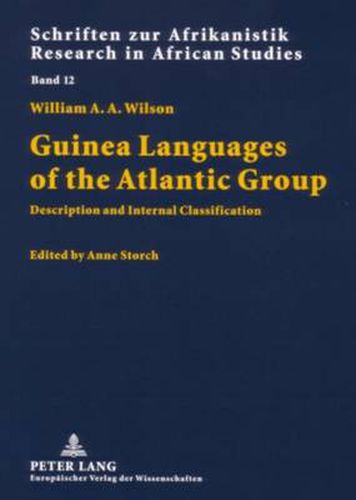Readings Newsletter
Become a Readings Member to make your shopping experience even easier.
Sign in or sign up for free!
You’re not far away from qualifying for FREE standard shipping within Australia
You’ve qualified for FREE standard shipping within Australia
The cart is loading…






Atlantic is one of the most diversified and most problematic Niger-Congo families as far as evidence for a monogenetic origin is concerned. Moreover, the group remains poorly known. Besides well-studied languages such as Fula, Wolof and Serer some sixty lesser known languages of Senegal, Guinea-Bissau, Guinea, Sierra Leone and Liberia are currently believed to belong to Atlantic. Many of these languages are not yet documented, and some never will - they disappeared some decades ago or are just on the verge of extinction. This book provides an overview of Atlantic south of the Wolof, Serer and Fula-speaking regions. The sections on the various Atlantic languages present information on phonology, morphology and basic syntacticpatterns by using General Linguistic Theory. Lexical material is presented in comparative wordlists. All data stem from the author’s own fieldwork in the 1950s and 1960s in Guinea Bissau and Guinea.
$9.00 standard shipping within Australia
FREE standard shipping within Australia for orders over $100.00
Express & International shipping calculated at checkout
Atlantic is one of the most diversified and most problematic Niger-Congo families as far as evidence for a monogenetic origin is concerned. Moreover, the group remains poorly known. Besides well-studied languages such as Fula, Wolof and Serer some sixty lesser known languages of Senegal, Guinea-Bissau, Guinea, Sierra Leone and Liberia are currently believed to belong to Atlantic. Many of these languages are not yet documented, and some never will - they disappeared some decades ago or are just on the verge of extinction. This book provides an overview of Atlantic south of the Wolof, Serer and Fula-speaking regions. The sections on the various Atlantic languages present information on phonology, morphology and basic syntacticpatterns by using General Linguistic Theory. Lexical material is presented in comparative wordlists. All data stem from the author’s own fieldwork in the 1950s and 1960s in Guinea Bissau and Guinea.